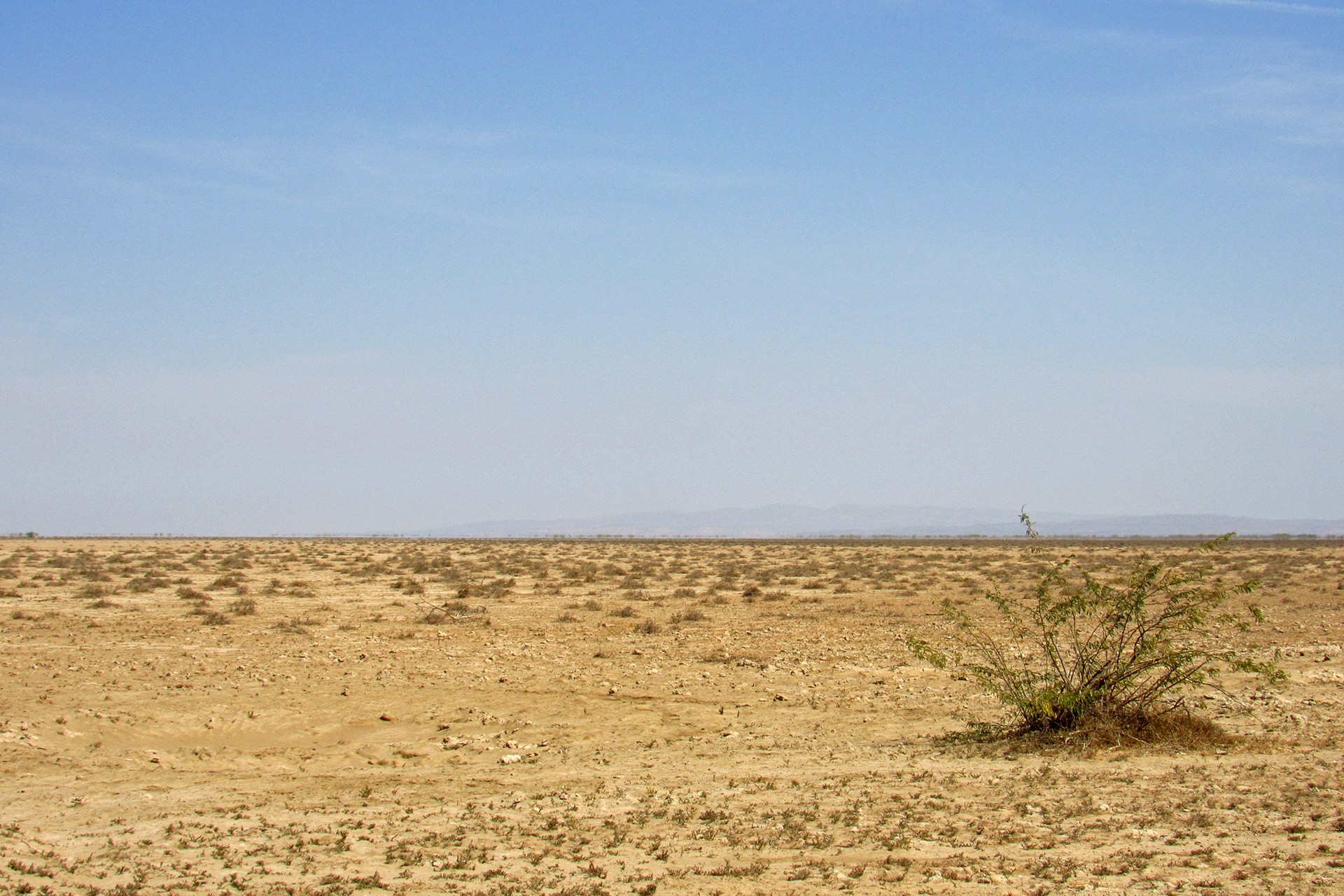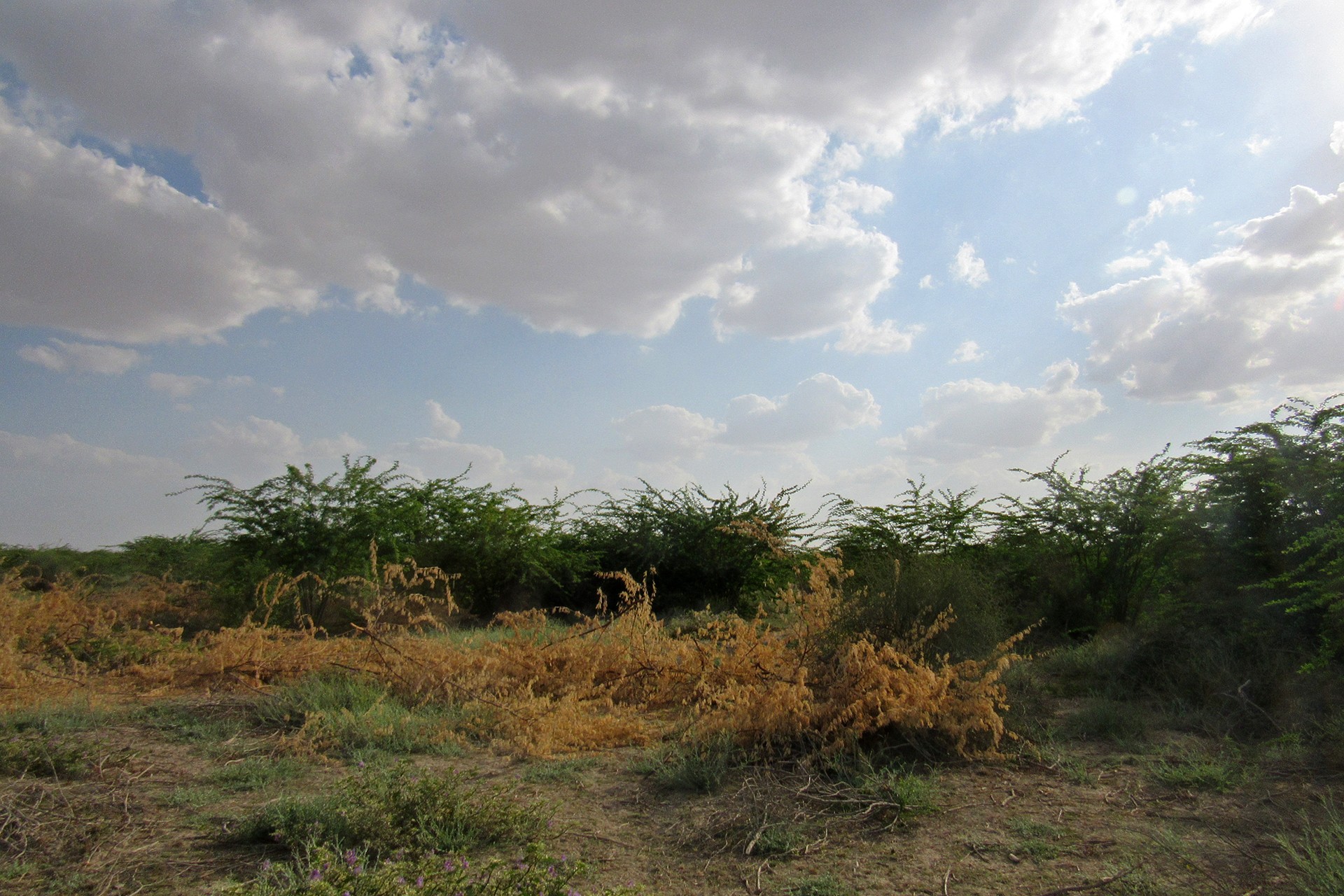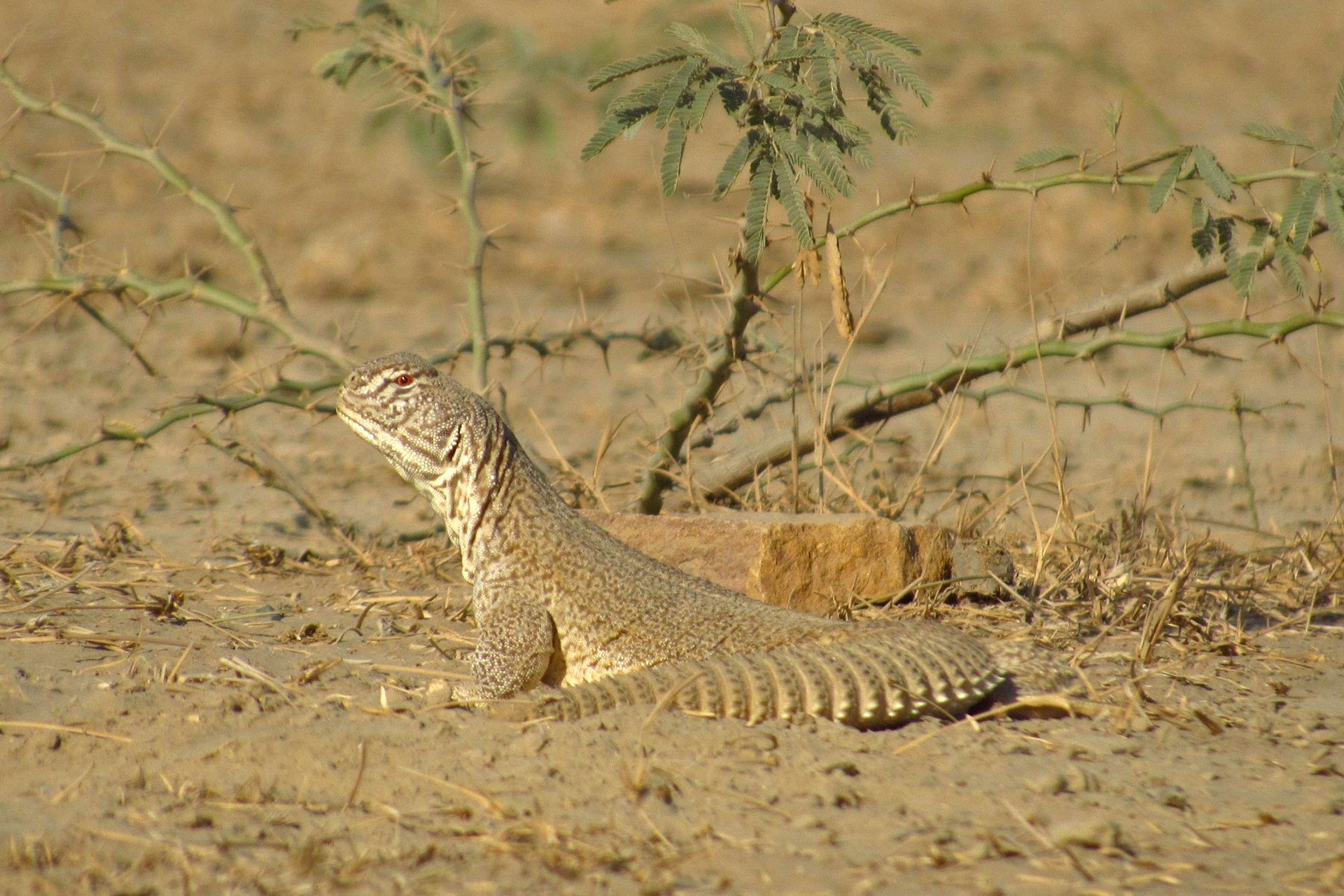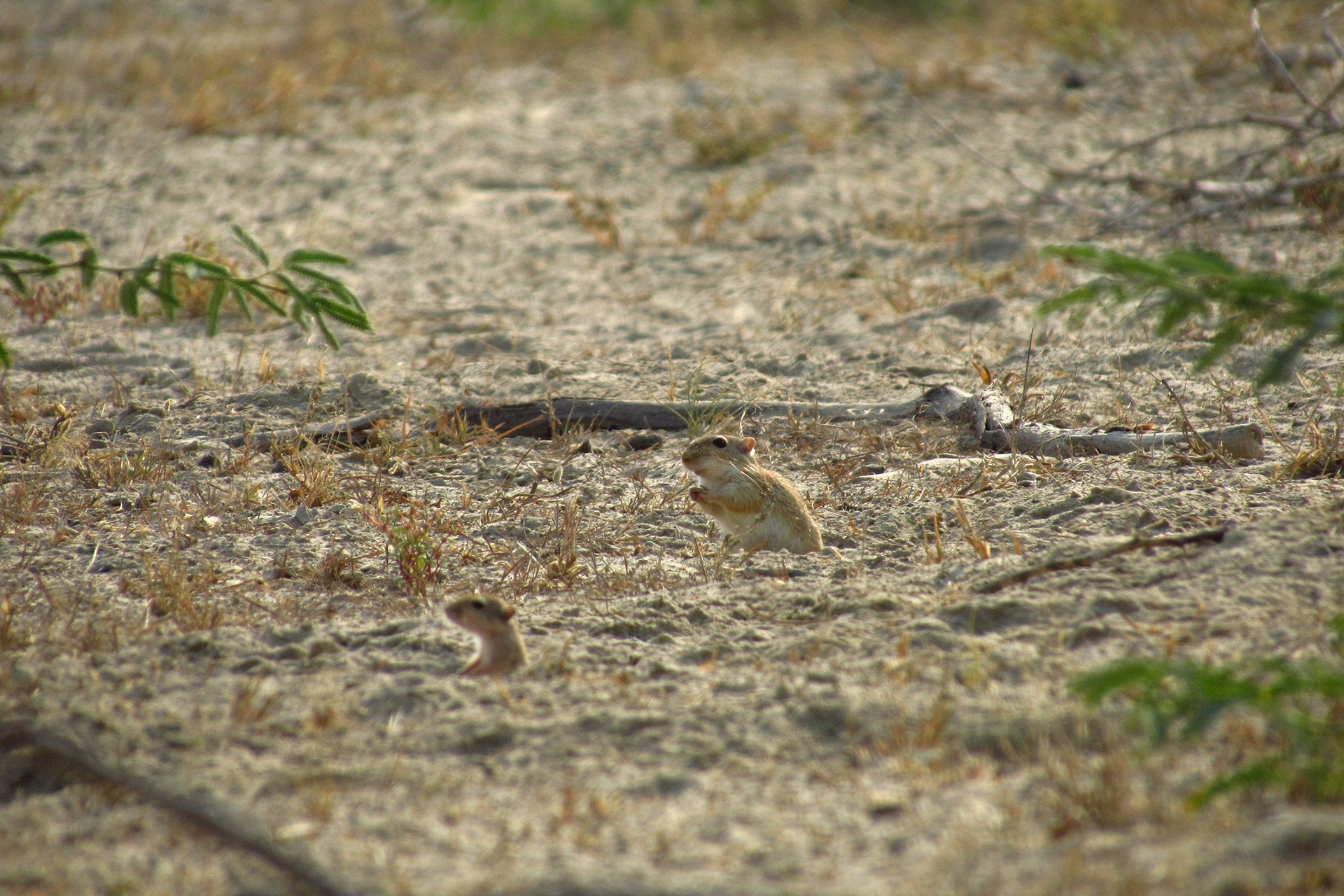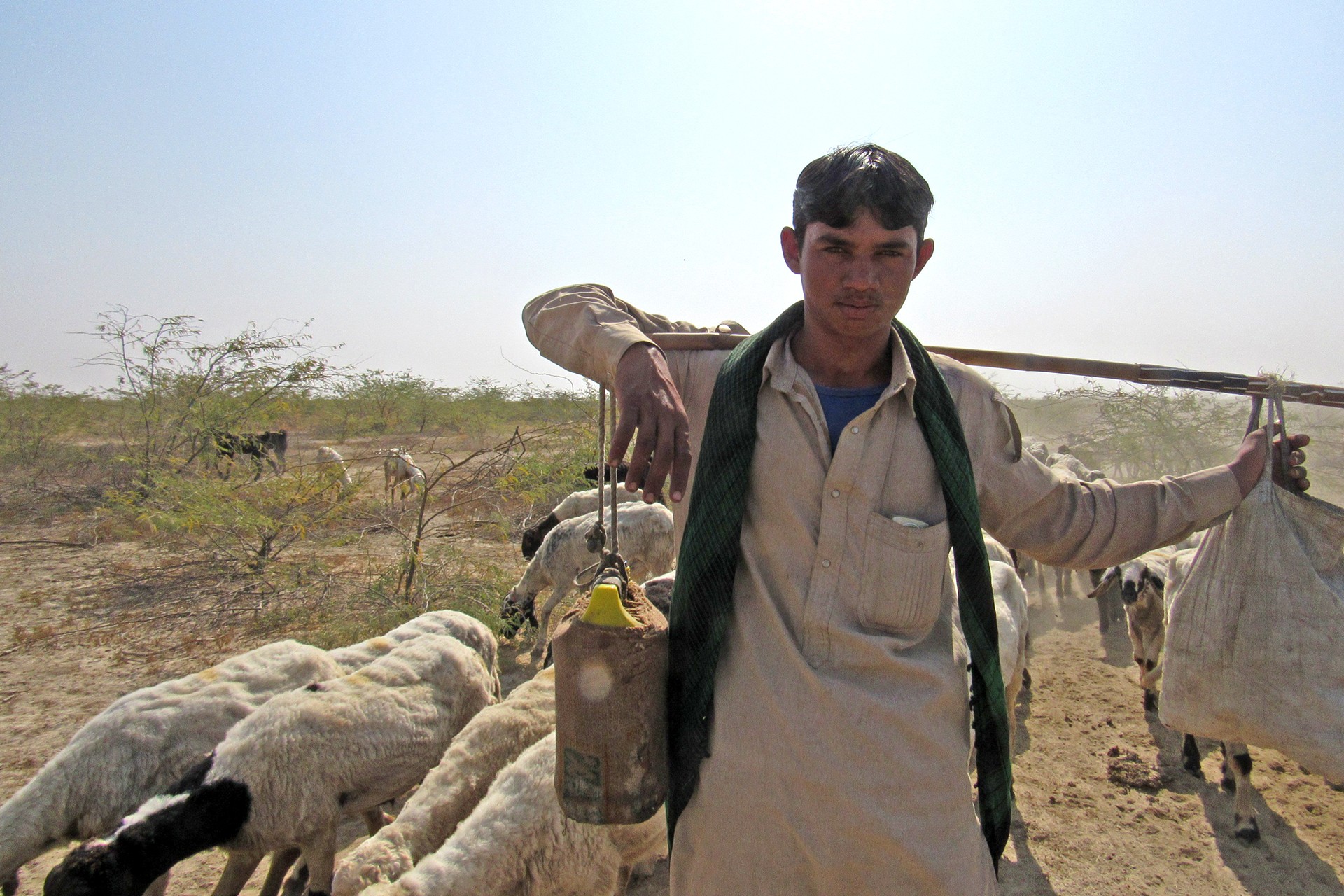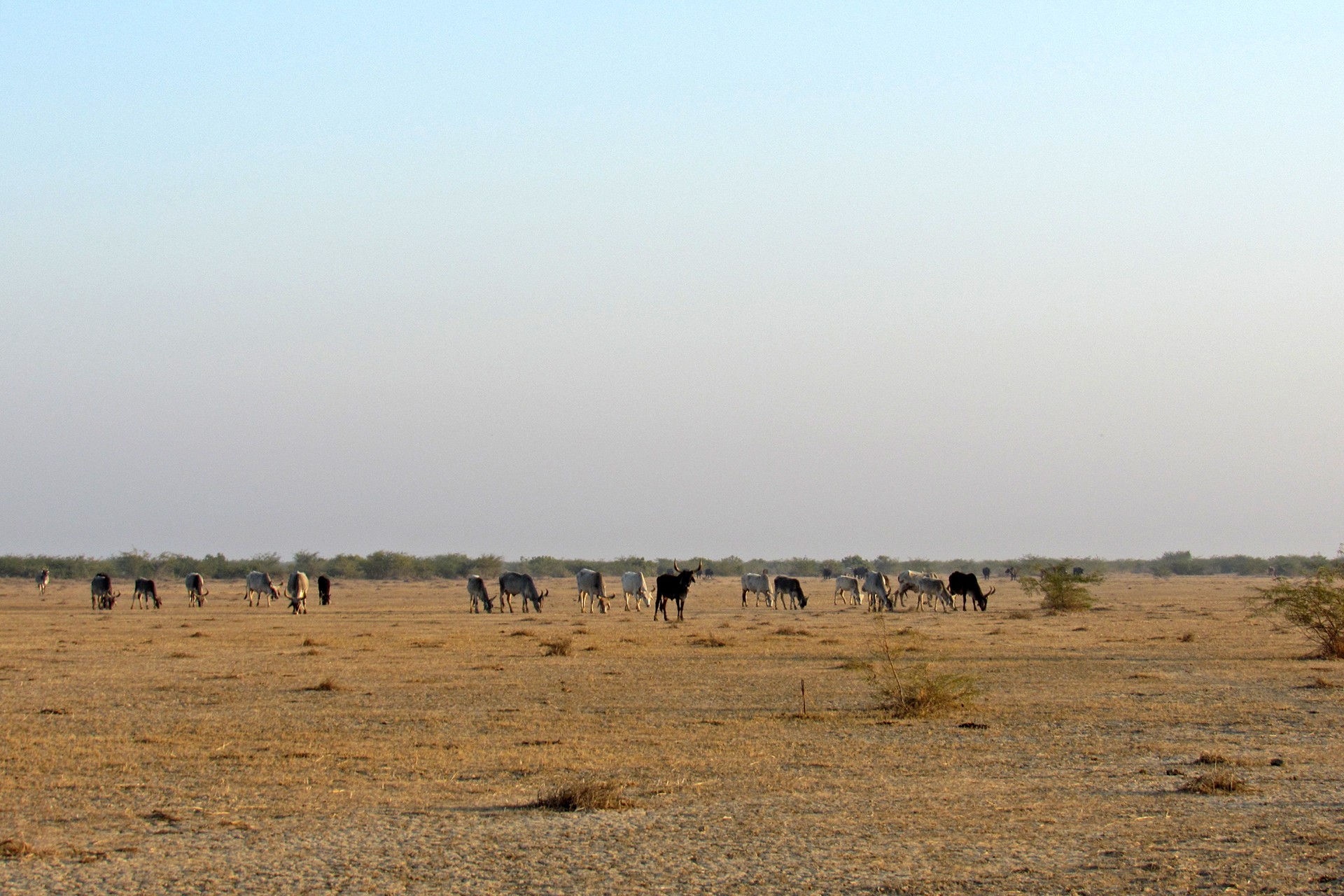When my father visited the Banni Grasslands of Gujarat in the winter of 2013, he took in the vast expanses of nothing punctuated by dense thickets of the unruly mesquite Prosopis juliflora and said disapprovingly, “These people don’t take care of their land. They need to plant some trees.”
Being from Kerala, where everything underfoot is a lush green, the starkness of Banni must have come as a surprise to him. But he is hardly the first to think that grasslands like Banni need to be planted with trees to be made more productive, more useful.
Under the colonial rule, savannahs – ecosystems consisting of grasslands and trees, were considered degraded forests or labelled wastelands because they were largely common village lands that could not be taxed. This nomenclature and sentiment still persists in our archaic forest laws; less than 7 percent of India’s savannah grasslands is protected. The fertile Terai grasslands, the alpine grasslands of the Himalayas, the shola grasslands of the Western Ghats and the semi-arid grasslands of Central India, are swept under the broad category of forests, or viewed as places to be ‘improved’– afforested and cultivated, or acquired by industries.
You can see that this has happened in the Banni Grasslands.
Banni lies in the Kachchh district in the upper jaw of Gujarat, not too far from the Pakistan border. It is bounded by mainland Kachchh to its south, the vast salt flats of the Great Rann of Kachchh to its north and east, and is spread over 3,000sq.km.
In the 1960s, a tree called Prosopis juliflora, native to South America, which was at the time being planted in other parts of India as a source of fuel wood and as part of afforestation schemes, was planted extensively in Kachchh in an attempt to check desertification and control salinity. It now occupies nearly 50 percent of Banni, displacing most of the native grasses that pastoralists and wildlife depend on. One such grass is Cyperus haspan, locally called dhamur, a favourite of the Common Cranes and the Desert Jirds which feed on the tubers of the grass.
Prosopis shares a strange and complex relationship with the animals in grasslands. Being adapted to the openness of the grasslands where they can detect predators early, most animals like the Blackbuck stay away from dense woody stands of Prosopis. Ironically though, the same animals help spreading the seeds of the tree to the open grasslands by eating its seeds and dispersing them.
Although many locals do find a source of income in harvesting Prosopis for fuel wood, the tree is called gando baval in Gujarati – mad acacia. A mad acacia with thorns and sprawling branches and seeds that quickly germinate. It was because of Prosopis that the pastoralists had to start keeping more buffaloes than cows, as cows cannot easily digest the pods of the gando baval. They also think that it is because of Prosopis that the grasslands are degrading. The pastoralist communities in Banni, called maldharis, say that it greedily drains the soil of water.
It may be because of this invasive tree that Banni will truly become a wasteland.
It is true that the beauty of the few remaining swathes of grassland and the stretches of barren nothingness do not leap at you. It is stark. Sometimes there is no sign of life for miles altogether. This, and the harsh, glaring sun on a summer’s day (which sometimes nearly touches 50C) can make it seem unforgiving.
But, to paraphrase John Steinbeck, the grassland mothers magic.
I was in Banni for six months from October 2015, when its wetlands were swollen with monsoonal waters, up until March 2016 when the hot Banni summer was just beginning to set in. I studied how the woodlands formed by Prosopis affected the behaviour of nocturnal rodents.
The skies in Banni were unlike any I have seen. They are vast, boundless, yawning across the horizon, with nothing obstructing the view. The sunrise and sunset skies are delicate shades of flamingo pink. And at night, I used to sit with my head turned skywards, taking in the jumble of constellations, sometimes counting shooting stars.
Before winter every year, Banni has a bevy of feathered visitors that migrate from distant lands. Its water bodies which fill during the monsoon and dry up over the winter, are suddenly full of flamingoes and pochards. I liked to think that the loud trumpeting calls of the Common Cranes, 40,000 of which are reported to visit Banni, were greetings, and I would stop my fieldwork to look up at them flying in huge flocks. And it was always a special day when harriers soared at eye level while I rode my bike to the field.
Spiny-tailed Lizards surface from their burrows in the summertime. They hibernate through the cold winter. With spines on their tails and their beige-coloured scales, these reptiles look as though they truly belong to stark, dry, dusty, almost desert-like Banni. It takes a discerning eye to spot them from afar.
Like the Spiny-tailed Lizards, there are many other creatures that live in burrows in this landscape of extreme temperatures. The Desert Jird has undeniably mastered the art of creating subterranean, air-conditioned homes. Their burrows reach depths of 1m and are multi-tiered, buffering them against the harsh and fluctuating surface temperatures. Their pro underground architecture skills apart, the jirds are entertaining to watch. They live in social colonies of up to 20 individuals and pop in and out of their multiple burrow entrances like jacks-in-the-box. When they are alarmed, they freeze in an upright position and drum their foot against the ground – an alarm signal for the other jirds inside the burrow, alerting them of possible danger. It’s hard not to laugh at them fondly.
The plants in Banni not only have to adapt to extreme temperatures and frequent drought but also to salty soil. Take Suaeda, called lano in Kachchhi, a plant eaten by foxes, camels and hungry researchers alike. It stores water in its fleshy, waxy leaves and is able to grow in saline soils. Some of the grasses lie dormant during the dry season and transform Banni into a green oasis once monsoon rains descend on the dry, parched soils.
The maldharis of Banni are no less captivating than its other inhabitants, with their charming mud houses, embroidery and leatherwork. Many of them migrate long distances with their livestock to access seasonal pastures. Others come together to dig shallow wells lined with grass that will help tide them over the harsh summers. Being surrounded by the kind of soil that retains footprints, they are also adept at reading footprints in the sand. I was taken aback on many occasions when people would remark casually that they noticed my footprints or my bike tracks while they were out taking their sheep grazing.
The wildlife, plants and people of grasslands like Banni are uniquely adapted to deal with the harshness of the climate, saline soils and scanty rainfall. For generations, the grasslands have supported the maldharis and their livestock. Being mostly nomadic, maldharis practice rotational grazing which allows for the regeneration of grasses. But things in Banni are in a flux now, with maldharis becoming more sedentary and demanding community rights to manage the grasslands – and we don’t yet know about the impact of the thousands of livestock on Banni’s grasslands.
Because of nomenclature that labels these ecosystems wastelands, and blinkered eyes that see only forests, Banni is no longer one of India’s largest grasslands. It is rapidly turning into weedy woodlands of Prosopis that are neither productive forests nor grasslands that mother magic.
